Before you reading, I apologize about broken English. I have a data array of moving mass, and want to show them by time area. Like:
import matplotlib.pyplot as plt
import numpy as np
x = np.array([0, 1, 2, 3])
y = np.array([3, 4, 5, 6])
plt.plot(x,y)
In this code, I just want to see them with different color each rows. For example, point (0,3) is white dot, point (3,5) is black dot, and (1,4) , (2,5) are gray dot but different brightness.
I just started python, so I searched pyplot lib but didn't find examples.
I tried with Seaborn library, and Pyplot 3d examples. But didn't find solution to express what want to do.


